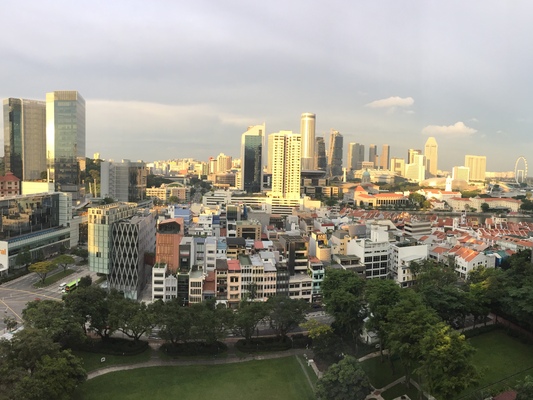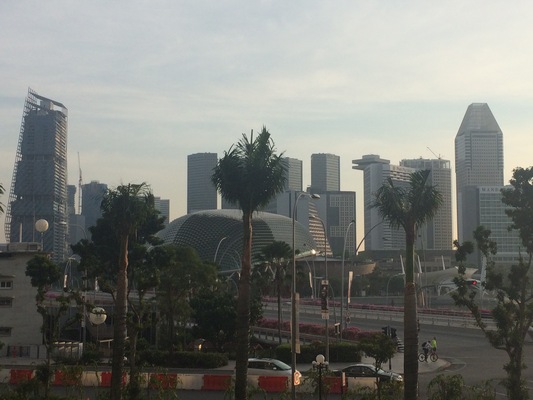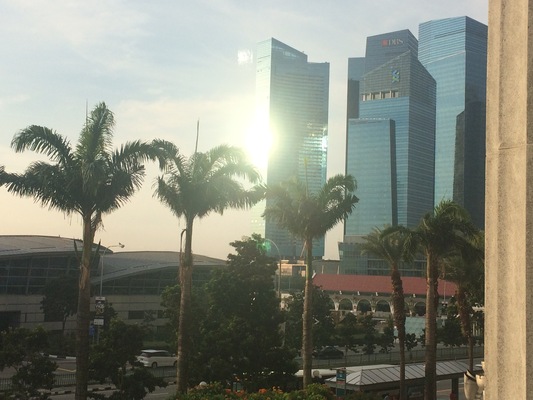- The response of several Singaporean companies to recessionary conditions in their respective industries demonstrated a willingness to confront the issue directly as well as unusual creativity.
- The initiatives undertaken by these companies go well beyond the traditional corporate response to recessionary conditions, and go against the prevailing wisdom of avoiding the consequences of recessions at all costs.
- The strategies employed by these Singaporean companies are of import to economies as a whole because they recognize the salutary role a recession plays in the overall development of an economy over time.
I was very impressed with several of the company meetings I held during my recent visit to Singapore. The reason I was impressed is that these companies are embracing their profit recession by seeking to increase productivity through innovation. I realize this phrase employs overused terminology to the point that it risks being meaningless. After all, what company does not make a claim to focus on “productivity” and “innovation.” The reason I find it important to write this note is that (1) what these Singaporean companies are doing is exemplary, (2) their approach is the exception rather than the rule, and (3) the initiatives undertaken by these companies are of import at the macro level.
There is nothing unusual about companies experiencing a period of shrinking revenue and profit. It is during such periods that an investor may better differentiate among companies based on their response to the crisis. These responses tend to fall under one of two categories: those that simply wait for the cycle to turn; and those that question their product, service, or management processes in order to adapt to a new set of circumstances. More often than not, the higher quality management teams tend to choose the latter alternative. What I found in Singapore went beyond the second course of action.
One of the management teams I met with operates in a global, heavy industry that is suffering from reduced demand for the company’s products and services. Having followed this corporate and its competitors over the years, the historical response to a recessionary period has invariably relied on shifting production to a new product type that happens to enjoy relatively more demand at that point in time, together with cost control in order to attain the wherewithal to survive until the next expansionary period. What this company is doing goes well beyond this sensible course of action, by actually rethinking the way the business works. More specifically, this company is working on a unique approach, one characterized by a focus on the complete value chain and how it may participate in all stages of said chain. The approach went beyond an upstream and downstream perspective, and included a well-thought-out view on recurring and non-recurring sources of revenue, as well as the associated capital structure. I have never seen the orchestration of a one-stop-solution in this industry, where difficulties related to scale and coordination with disparate parties appear insurmountable. This company’s approach to securing its own future is as ambitious as it is innovative.
The second management team I met with also operates in a global, heavy industry, but limits its business to providing services without manufacturing of its own. Like the aforementioned company, this management team has also established alliances with parties within the industry that had traditionally operated independently. However, the crux of the profit crunch in this instance is technological progress which reduces demand for its services based on man-hours. Rather than lament the deflationary impact of technological progress on its revenue and profit, the company is actively seeking to place itself at the forefront of said technology. The company is fully conscious that such a strategy probably means lower revenue going forward; however, it is also aware that the only way to grow profit is through a reduction in the cost per unit of service provision, or put differently, a productivity increase.
Such instances of confronting a profit recession head-on with a creative response are rare – not only because these examples deviate from the aforementioned two general categories of a corporate response to a recession, but also because there are so many cases of companies resisting change altogether. Consider China’s difficulties closing excess capacity in many industries due to pressure to maintain local employment at the provincial level. Consider as well economies heavily reliant on commodity exports that have historically responded to lower commodity prices by devaluing their currency instead of increasing productivity.
The reason the strategies employed by these Singaporean companies are of import to economies as a whole is that they recognize the salutary role a recession plays in the overall development of an economy over time. Recessions are opportunities to correct past misallocations of capital and increase productivity. Remember that there are only two determinants of an economy’s long-term growth rate: population and productivity. Most of the world, including the larger emerging markets, have aging populations. As a result, an unwavering focus on productivity is essential to securing a meaningful long-term rate of growth. The example set by these Singaporean companies stands in contrast to the prevailing wisdom in most emerging and developed economies that recessions are best avoided. While there is no guarantee that these particular companies will succeed in their efforts, in my estimation they stand a much better chance of securing long-term growth than companies and countries that attempt to avoid the consequences of recessions by burdening their future with ever larger quantities of debt.
Paul EspinosaSingapore




- The views and information discussed in this commentary are as of the date of publication, are subject to change, and may not reflect Seafarer’s current views. The views expressed represent an assessment of market conditions at a specific point in time, are opinions only and should not be relied upon as investment advice regarding a particular investment or markets in general. Such information does not constitute a recommendation to buy or sell specific securities or investment vehicles. It should not be assumed that any investment will be profitable or will equal the performance of the portfolios or any securities or any sectors mentioned herein. The subject matter contained herein has been derived from several sources believed to be reliable and accurate at the time of compilation. Seafarer does not accept any liability for losses either direct or consequential caused by the use of this information.
![[Chrome]](/_layout/images/ua/chrome.png)
![[Firefox]](/_layout/images/ua/firefox.png)
![[Opera]](/_layout/images/ua/opera.png)
![[Microsoft Edge]](/_layout/images/ua/edge.png)